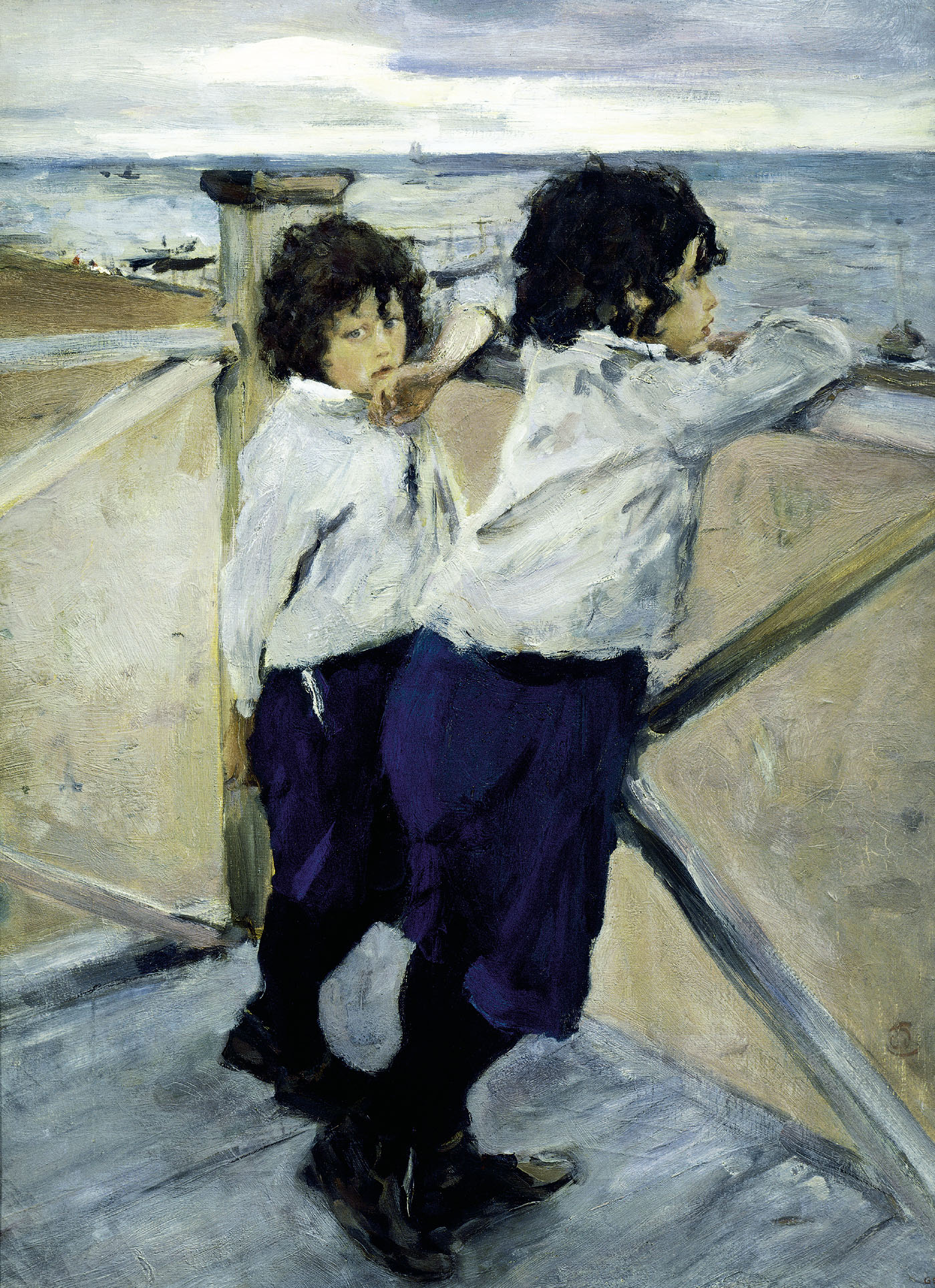|
Sergey Chernyshyov (architect)
Sergey Egorovich Chernyshyov (; 4 October 1881 - April 26, 1963) was a Russian and Soviet architect, urban planner and teacher, chief architect of Moscow in 1934–1941, author of the General Plan for the Reconstruction of Moscow (1935). 1st Secretary of the Union of Architects of the USSR (1950–1955). Winner of the Stalin Prize, first degree (1949), for the design of the Main building of Moscow State University). Biography Born in 1881 in the village of Aleksandrovka, Kolomensky District, Moscow Oblast into a peasant family. His father was a self-taught icon painter. Chernyshyov showed early artistic talent and in 1893 a peasant gathering decided to send him to study. In the same year he entered the Moscow School of Painting, Sculpture and Architecture. At first he studied in the painting class of Valentin Serov, Isaac Levitan, Konstantin Korovin and Apollinary Vasnetsov, then he became interested in architecture and was transferred to the architectural class. He graduated ... [...More Info...] [...Related Items...] OR: [Wikipedia] [Google] [Baidu] |
Kolomensky District
Kolomensky District () is an administrativeLaw #11/2013-OZ and municipalLaw #43/2005-OZ district (raion), one of the thirty-six in Moscow Oblast, Russia. It is located in the southeast of the oblast and borders with Lukhovitsky, Ozyorsky, Stupinsky, Voskresensky, and with Yegoryevsky Districts and the territory of the City of Kolomna. The area of the district is . Its administrative center is the city of Kolomna (which is not administratively a part of the district). Population: 40,780 ( 2002 Census); Geography Main rivers flowing through the district are the Oka and the Moskva. They are relatively clean. History The district was established in 1929. Governance Administrative and municipal status Within the framework of administrative divisions, Kolomensky District is one of the thirty-six in the oblast. The city of Kolomna serves as its administrative center An administrative centre is a seat of regional administration or local government, or a county town, or the ... [...More Info...] [...Related Items...] OR: [Wikipedia] [Google] [Baidu] |
Valentin Serov
Valentin Alexandrovich Serov (; – 5 December 1911) was a Russian painter and one of the premier portrait artists of his era. Life and work Youth and education Serov was born in Saint Petersburg, son of the Russian composer and music critic Alexander Serov and his wife and former student Valentina Serova, also a composer in her own right. Raised in a highly artistic milieu he was encouraged to pursue his talents by his parents and in his childhood he studied in Paris and Moscow under Ilya Repin and in the St. Petersburg Academy of Arts (1880–1885) under Pavel Chistyakov. Serov's early creativity was sparked by the realistic art of Repin and strict pedagogical system of Chistyakov. Further influences on Serov were the old master paintings he viewed in the museums of Russia and Western Europe, friendships with Mikhail Vrubel and (later) Konstantin Korovin, and the creative atmosphere of the Abramtsevo Colony, to which he was closely connected. Early works The ... [...More Info...] [...Related Items...] OR: [Wikipedia] [Google] [Baidu] |
Alexey Shchusev
Alexey Victorovich Shchusev (; – 24 May 1949) was a Russian and Soviet architect who was successful during three consecutive epochs of Russian architecture – Art Nouveau (broadly construed), Constructivism (art), Constructivism, and Stalinist architecture, being one of the few Russian architects to be celebrated under both the House of Romanov, Romanovs and the communists, becoming the most decorated architect in terms of USSR State Prize, Stalin prizes awarded. In the 1900s, Shchusev established himself as a church architect, and developed his Modern architecture#Early modernism in Europe (1900–1914), proto-modernist style, which blended Art Nouveau with Russian Revival architecture. Immediately before and during World War I he designed and built railway stations for the Nikolai von Meck, von Meck family, notably the Moscow Kazansky railway station, Kazansky Rail Terminal in Moscow. After the October Revolution, Shchusev pragmatically supported the Bolsheviks, and was rew ... [...More Info...] [...Related Items...] OR: [Wikipedia] [Google] [Baidu] |
Znamenka Street
Znamenka Street is a street in Khamovniki District of Moscow. It runs from Borovitskaya Square to Arbatskaya Square, lies between Kolymazhny Lane and Vozdvizhenka Street. The numbering of houses is carried out from Borovitskaya Square. Etymology The name appeared at the end of the 16th century and it is named after the Church of the Sign of the Most Holy Theotokos (demolished in 1931). After the Russian Revolution, Znamenka was renamed into Krasnoznamyonnaya Street, and in 1925 into Frunze Street - in honor of the famous Soviet military leader Mikhail Frunze, who died in the same year, who worked in the building of the Revolutionary Military Council located on the street. In 1990, the street was reverted to its original name. Geography The street is near to the Kremlin and many official buildings are located here, for example: *Institute of State and Law *General Staff of the Armed Forces of the Russian Federation References Streets in Moscow {{Russia-road-stub ... [...More Info...] [...Related Items...] OR: [Wikipedia] [Google] [Baidu] |


